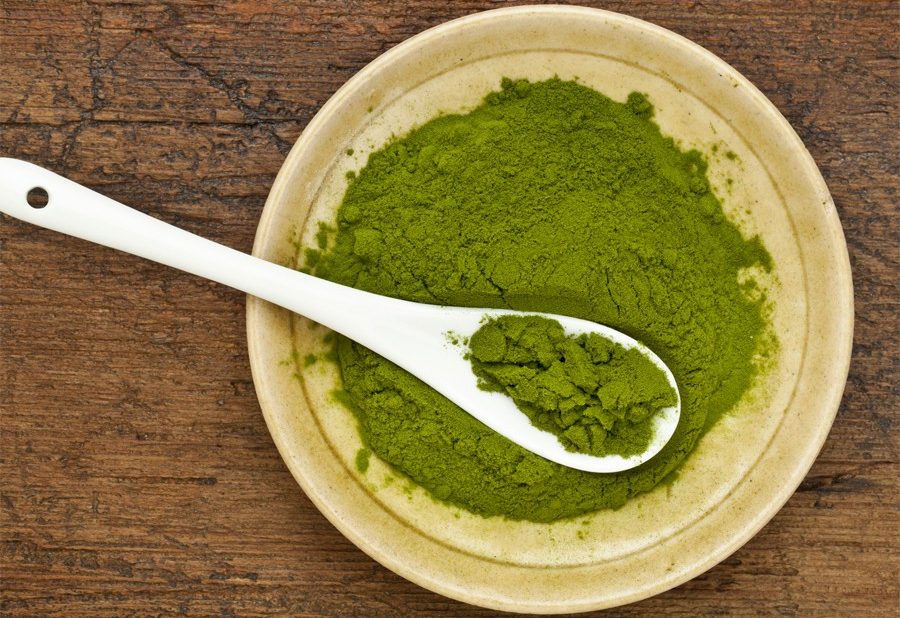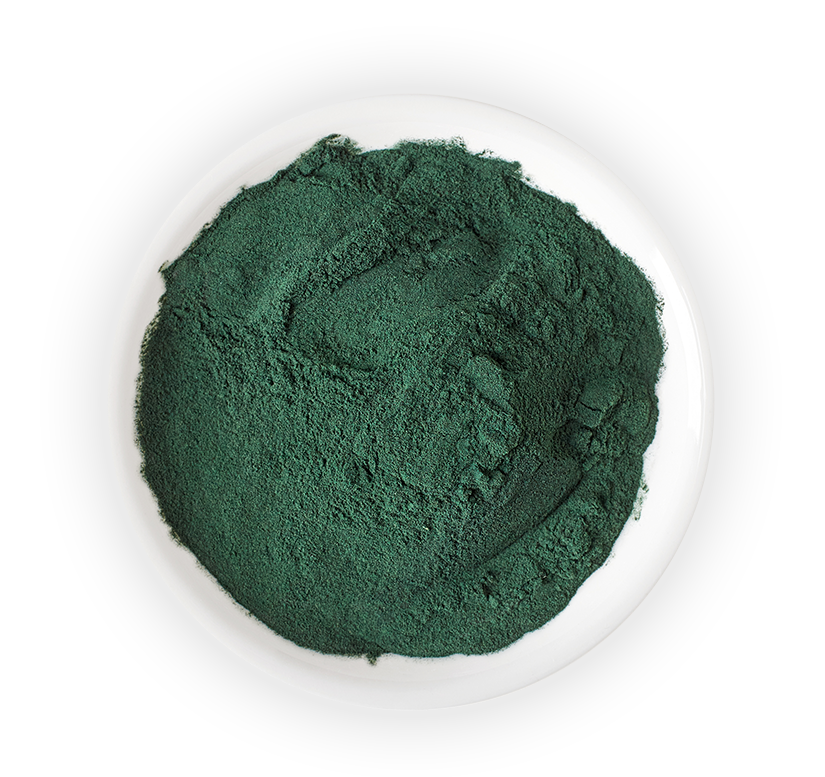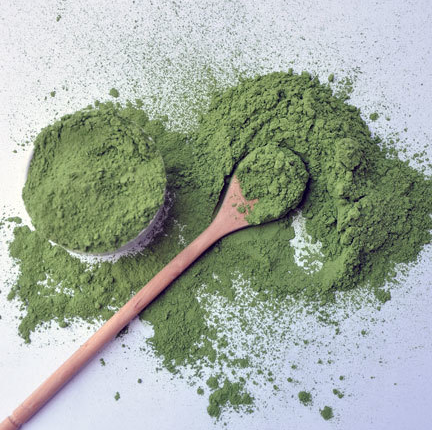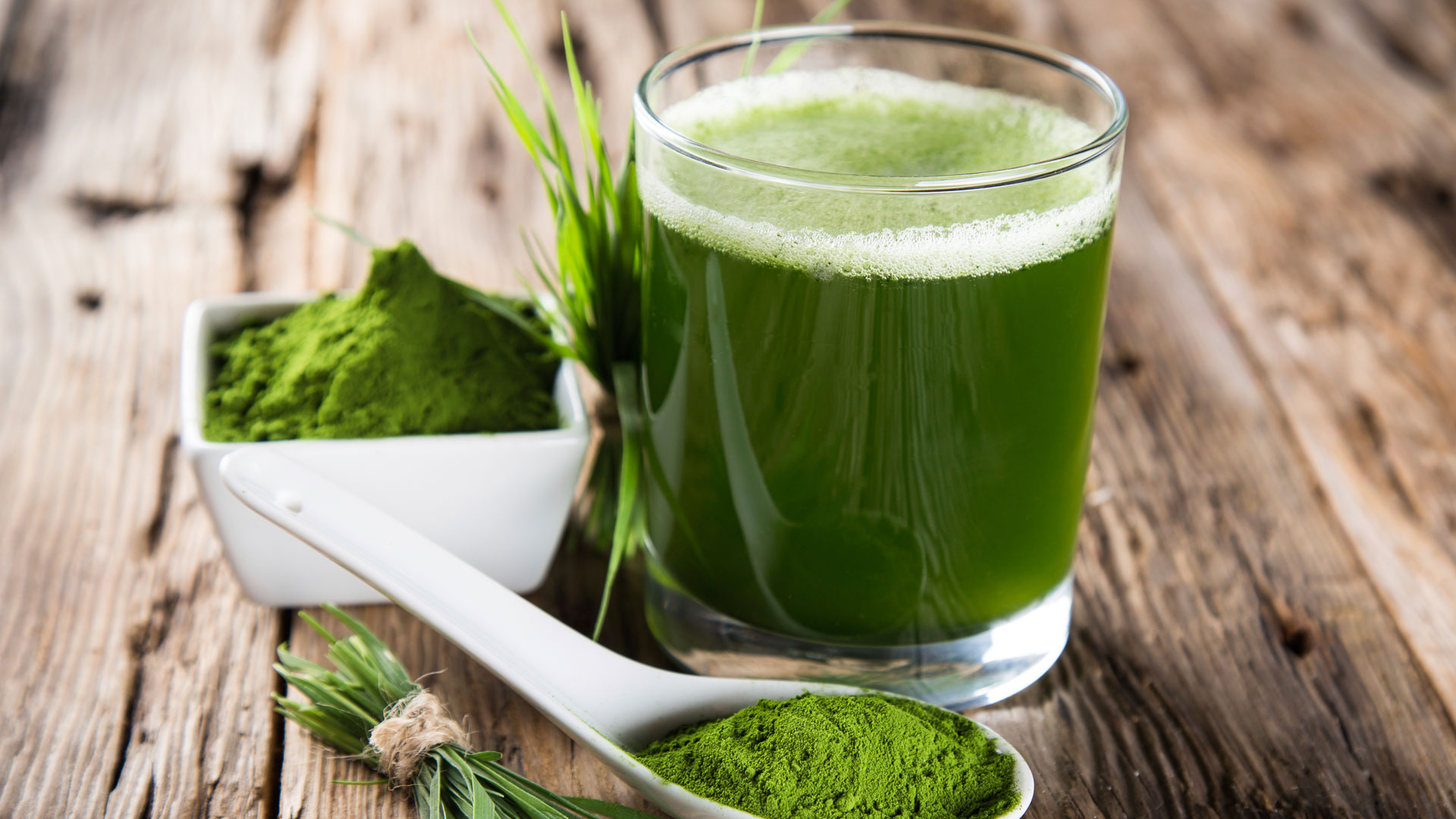Since you were a child you’ve been told to ‘eat your greens’ and just as well. Whatever your feelings towards all things green, scientists are constantly discovering more and more reasons why they deserve to be in our diet. The great news, especially for those who are turned off at the thought of consuming 1kg of spinach a day, is that we can supplement fresh leaves with green plant powders. Here’s what you need to know…
Why green?
What is it about green foods (vegetables and plant-based foods) that make them so good for us? One of their greatest qualities is that they contain high levels of chlorophyll molecules, which are very similar to the oxygen-carrying haemoglobin proteins found in our blood. Chlorophyll, which means ‘green leaf’ in Latin, is responsible for the photosynthesis process and gives leaves their green colour.
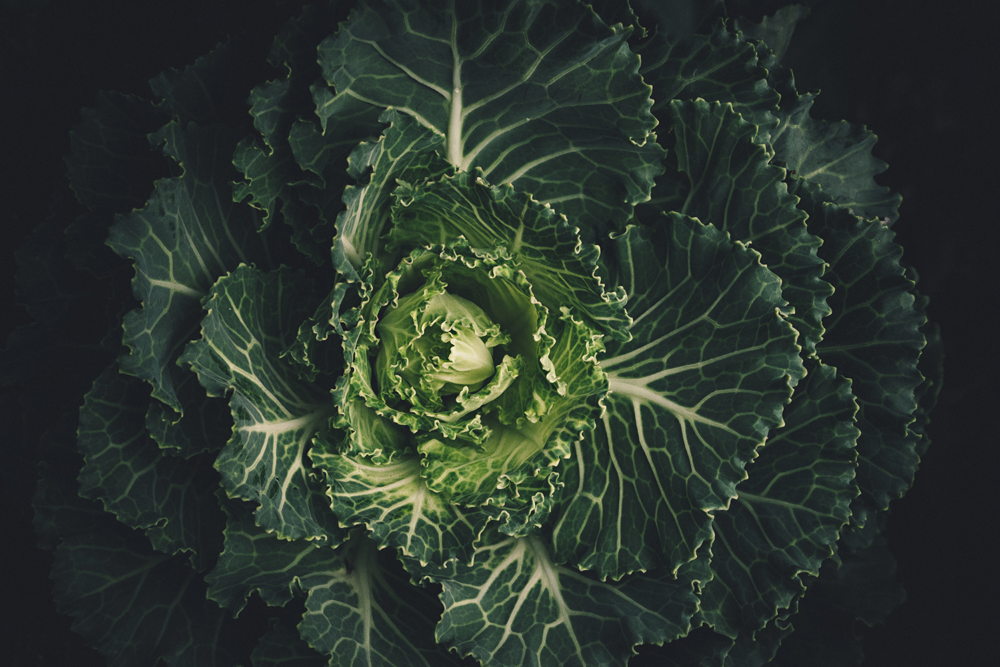
How do we benefit from consuming chlorophyll?
We know it plays an important role in plant growth but are chlorophyll’s qualities transferable to us humans? In short, yes. Chlorophyll has a number of health properties that we benefit from:
- It kills bacteria such as streptococcus (strep), staphylococcus aureus (staph) and some GI tract bacteria
- Increases the number of red blood cells in the blood
- Increases the amount of oxygen used in the blood
- Reduces the amount of carcinogens, which attack the DNA in our organs
- Can cleanse the blood
- Can rejuvenate the blood
- Helps to keep the immune system strong
- Cleanses the colon
- Stimulates the bowels
- Treats skin disorders
- Improves the function of the liver
- Can alkalize the body
- Works as an anti-inflammatory
- Fights infection
- Boosts intestinal flora
- Can help with anaemia
- Helps prevent kidney stones
Where can I find chlorophyll?
The best sources of chlorophyll are found in leafy green vegetables, romaine lettuce, broccoli, wheatgrass, spinach, Spirulina, chlorella, green barley grass and alfalfa. A combination of these ingredients will make sure that you’re meeting all your dietary needs and getting the full benefits.
What else can greens do for us?
As well as the benefits received from consuming chlorophyll there are other health perks that are gained from a diet rich in green powders. Let’s take a look:
1. Alfalfa
This member of the pea family is also referred to as the ‘father of all foods’ a definition that, once you’ve read its list of benefits, you won’t disagree with.
The powdered version of alfalfa is a rich source of protein and is low in calories so it’s regularly used by those wishing to lose weight. It is packed with the vitamins A, C and K so putting alfalfa powder in a smoothie or drink, for example, is a useful way to make sure that you’re getting your recommended daily dose of essential vitamins. Alfalfa also contains a hearty supply of anti-oxidants that are essential for helping the body to cope with free radical damage.
Its high levels of minerals, including calcium and iron, making it particularly good for those who lead a vegan or vegetarian diet. Interestingly, alfalfa powder is a good source of magnesium (a stress reliever) and hosts a complex compound of phytonutrients that are thought to relieve the symptoms associated with the menopause by combating oestrogen deficiency.
Arthritis sufferers can benefit from taking alfalfa powder as it has strong anti-inflammatory properties. Alfalfa can also be used by people with high cholesterol or who wish to focus on heart health. It has been found to increase levels of high-density lipoproteins (HDL) in the blood and reduce fatty deposits in the arteries.
2. Spirulina
Okay, the thought of digesting a freshwater microalgae (or bacteria) for breakfast mightn’t be as appealing as a slice of toast with honey but starting the day with a drink made with fresh fruit and some Spirulina powder will certainly get you going…
What makes it so beneficial? Well, one of Spirulina’s greatest assets is its ability to detoxify. In particular, it has been found to be effective in eliminating heavy metals from the body through a chelating process (the bonding of ions).1 Scientific research backs this up – researchers found that Spirulina eliminates substances such as arsenic, mercury and lead which enter our systems via water, dental fillings, cigarettes and fish.
Spirulina is also a plant-based alternative for those wishing to address Candida. The green powder can help to rebalance intestinal gut flora by eliminating any present Candida and preventing any further fungus from growing. Additionally, by rebalancing the gut flora, the green powder is ideal for sufferers of leaky gut syndrome or poor digestion.
If infections or low immunity are issues, Spirulina can also come to the rescue. It has strong antibody and immunity-boosting effects on the body which can even stretch as far as dealing with and resisting chronic disease.
We’re not finished. Spirulina’s other and numerous health gifts include its ability to lower blood pressure, alleviate sinus issues, reduce cholesterol, lower the chances of stroke, enhance energy performance and speed up weight loss. As a side note, if you are using Spirulina for weight loss, the common thought is that because of its high protein levels, you will reap the greatest rewards, metabolically speaking, if you consume it either in the morning or afternoon rather than at night.
In terms of treating terminal disease, a study carried out by the Institute of Nutritional Sciences at the University of Giessen2 found that Spirulina had positive effects in stabilising T cells and slowing the formation of HIV in its patients.
This grass gets the green light when it comes to its health boosting properties. Green barley grass is filled to the brim with minerals and vitamins, including high levels of potassium, magnesium, iron, copper, phosphorous, manganese, zinc, beta-carotene, vitamins B1, B2, B6, C, folic and pantathenic acid. In comparison to cow’s milk, it contains 30 times more vitamin B1 and 11 times more calcium.
Green barley grass has a high sodium count which makes it particularly good at dissolving any calcium deposits on joints and can replenish any depleted sodium levels in the stomach – this is necessary to aid digestion and treat ulcerative colitis.
It is known for being an excellent anti-oxidant, and therefore a great tool in fighting free radicals, in particular, it is renowned as being useful in the fight against the signs of ageing. This green powder has a rejuvenating effect on the skin and can add a glow to previously lacklustre skin.
Interestingly, because it contains glutamic acid, green barley grass can be used for fighting food cravings and even as a way to break addictions to coffee, alcohol, cigarettes and sugar.
4. Wheatgrass Powder
Many people are put off drinking wheatgrass juice because of the taste. If you’ve never tried it, just imagine drinking a cross between grass and pond water. Yum. However, the good news is that wheatgrass powder has none of the grassy pondliness but still includes all, if not more, of the goodness.
Wheatgrass powder contains a staggering 98 minerals and 19 amino acids. It is made up of 70% chlorophyll, which as we know has amazing health-boosting properties.
The benefits of taking wheatgrass powder read like a medical ‘who’s who’. For example, it can: reverse the ageing process; detoxify the system; improve digestion; cleanse blood; treat arthritis symptoms; relieve fatigue; treat skin wounds; fight tooth decay and, gasp, has anti-oxidants which can assist in the treatment of cancer, reducing odour and reversing the signs of ageing. Phew!
When it comes to our skin, wheatgrass can be used in a myriad of ways to treat complaints and needs. For instance, you can mix the powder with honey to make a soothing face mask or use it in a cleanser to treat acne and other conditions including skin diseases. It’s also an effective treatment to settle the pain of sunburn.
Uses for wheatgrass powder extend to the hair where it can be used as a treatment for scalp conditions such as dandruff and irritable scalp and it is also thought to reduce the onset of grey hair.
Wheatgrass is popularly used for weight loss as it has appetite-quashing qualities. It is best to consume wheatgrass powder on either an empty stomach or with fruit and vegetables. If eaten in large amounts or at the end of a meal it can cause nausea.
So it seems that green really does mean go! Remember, by eating your green plants in powder form, you’ll be topping up your intake of vitamins and nutrients and boosting your body’s defences. What’s not to like?
1 Lead removal by Spirulina platensis biomass Ali A. Al-Homaidan, Aljawharah F. Al-Abbad, Amal A. Al-Hazzani, Abdullah A. Al-Ghanayem, and Jamila A. Alabdullatif International Journal of Phytoremediation Vol. 18, Iss. 2,2016
2 The effect of Arthrospira platensis capsules on CD4 T-cells and antioxidative capacity in a randomized pilot study of adult women infected with human immunodeficiency virus not under HAART in Yaoundé, Cameroon. Winter FS, Emakam F, Kfutwah A, Hermann J, Azabji-Kenfack M, Krawinkel MB. Nutrients. 2014 Jul 23;6(7):2973-86. doi: 10.3390/nu6072973.
Michelle Hubbard is a UK-born writer living in (and loving) New Zealand. An experienced writer, Michelle has worked women’s monthly magazines such as Good Housekeeping and SHE and as a journalist for The London Evening Standard and New Woman’s websites. Additionally, she wrote her own parenting blog while living in the UK. Michelle qualified as a personal trainer in 2005. Although she no longer trains, she still participates in regular exercise such as CrossFit, Zumba, yoga and running.

